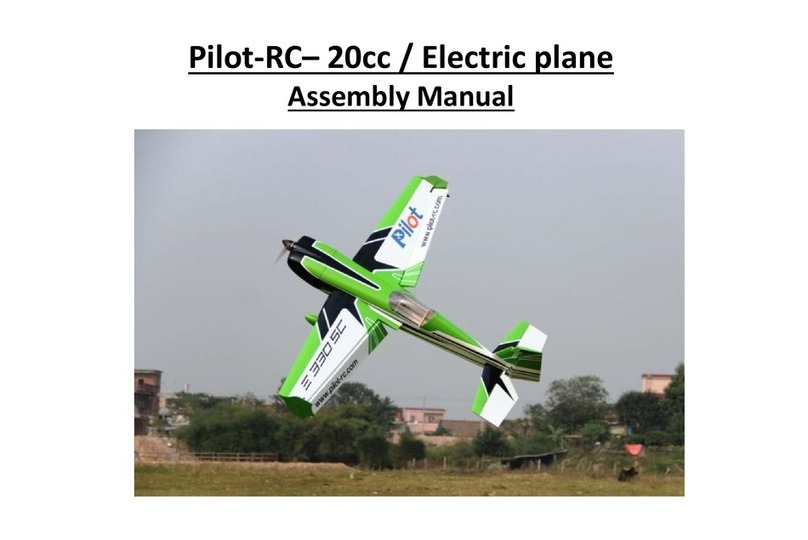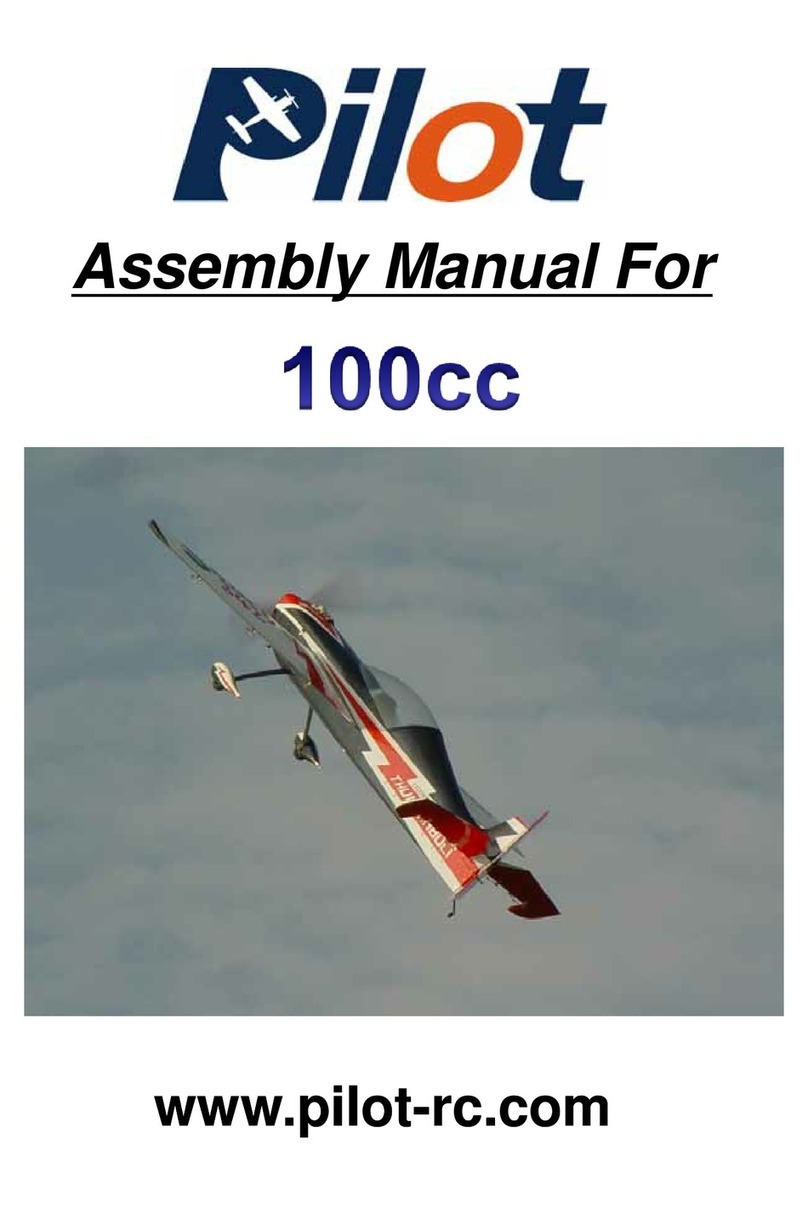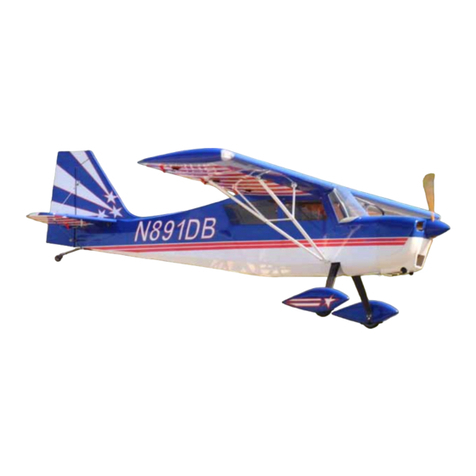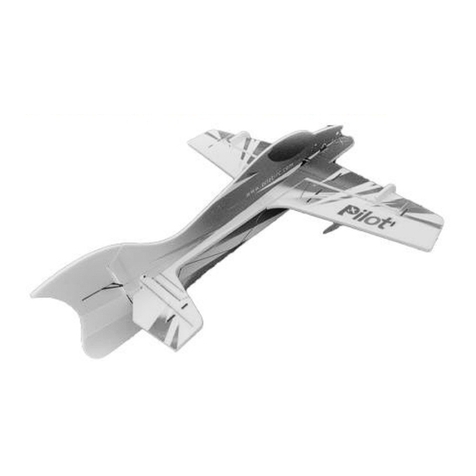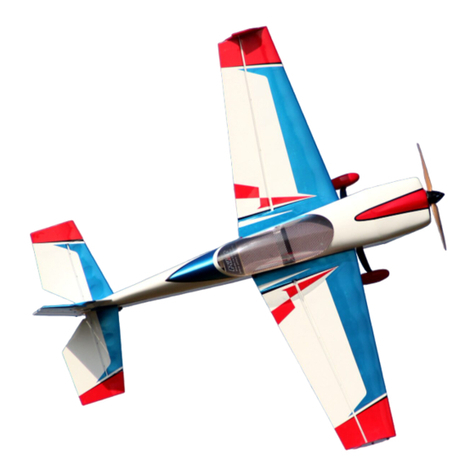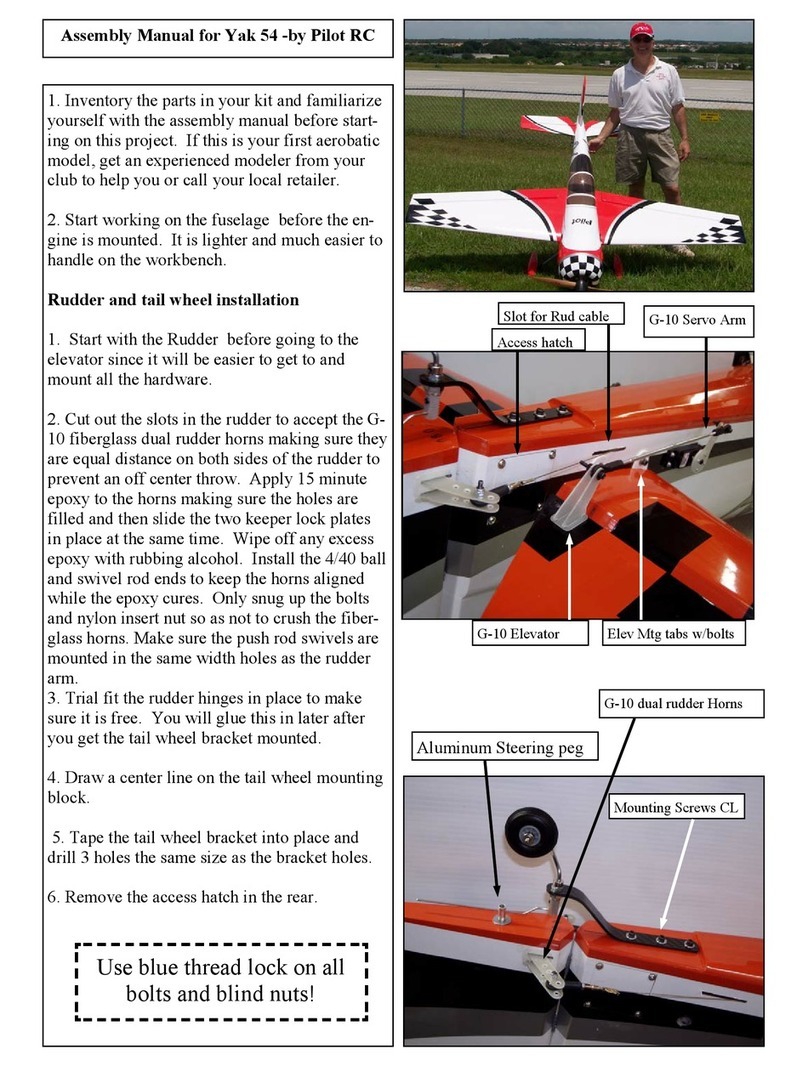Thank you for purchasing our Edge 540 plane. we strive to achieve a good quality quick
build ARF aircraft .
It requires the least amount of assembly of any ARF kit to obtain the maximum
performance.
Both the design and manufacturing have been undertaken to the highest standards,
using best quality hardware, covering, wood & glue during factory construction stage.
By optimal weight and balance along with reliable construction, you will find this plane
ideal for 3D - Freestyle and aerobatic flying.
We hope that every effort and service we offer will, in turn, give you confidence using
PILOT Models.
Have a wonderful time flying your 3D aircraft in a suitable safe space!
Introduction
Warrant
●All Pilot-RC products are guaranteed against defects for 30 days of receiving your
airplane. This warranty is limited to construction or production defects in both material and
workmanship , it does not cover any component parts damaged through use or
modification .
●The manufacture cannot supervise the assembly, operation or maintenance, and is not
responsible for radio malfunctions. Please ensure your radio system is in good condition.
We are not responsible for any accident or damage while using this product. It is
impossible to determine for certain whether crash damage was the result of improper
installation of our products, a radio system failure, or pilot error. Model airplane owners use
our products at their own risk.
●Pilot-RC will not be liable for any costs, unless agreed and proved beyond doubt the
failure was due to faulty materials or fabrication. Any agreed cost will not exceed the cost
of the airframe and not include engine, radio equipment or third party claims.
●Should you wish to return a product or receive replacement parts, all shipping cost must
be paid by the customer.
Attention
●1. Do not regard this plane as a toy!
●2. To ensure safety, please read the instruction manual thoroughly before assembly.
●3. Building and operating an RC Plane of this nature
requires previous experience and competence to an experienced level. This plane is not for
a beginner!
●4. If you are in doubt have an experienced pilot at hand. Diligent practicing and correct
guidance is essential, accidents can cause bodily harm and property damage.
●5. Seek assistance from an experienced person or airplane model clubs in assembly,
operation and maintenance to ensure successful training.
●6. Fly only in a registered RC model club airfield that is approved by your local
Academy of Model Aeronautics (AMA).
●Pilot-RC has the right to revise the plane, the instructions and the limited warranty
without notice. If you have any problems and questions please contact Pilot –RC:
Phone:+86 760 88781293
FAX: +86 760 88780293
Address: No.34, Chengnan Er Road , Zhongshan city, 528400, Guangdong Province, China

